I always believe that you should put your money where your mouth is! Buying astrophotography gear is quite expensive. Reviewing gear for a couple of imaging nights gives us a first impression, but buying and using it over time will give us the best impression. That’s why I also incorporate this page, to let you know what buying decisions I’ve personally made over the years. Like any of you, I struggle with the many options available on the astromarket, and I try to make (and share) the best decision after doing my research (you should do yours as well!). Below, you’ll find my gear with my thoughts and impressions, with links to reliable vendors where you can buy it. I hope this info will help you to make an informed decision!
My Telescopes
TS Photoline 80/480mm F/6 APO Refractor
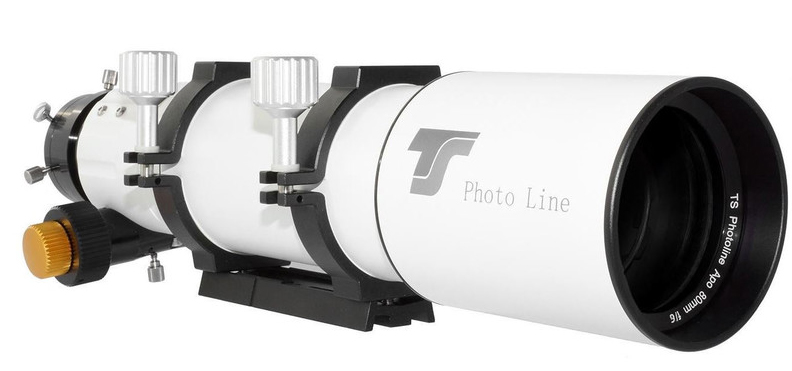
This is my TS Photoline 80/480mm F/6 APO Refractor Telescope. I absolutely love this scope!!! It is lightweight, easy to use, and doesn’t require any maintenance (e.g., collimation). I highly recommend this (or a similar) apochromatic refractor telescope to people who are starting their astrophotography hobby. The photos I’ve managed to take with this APO refractor (see my astrophotos) are of high quality, as the telescope has the high-quality FPL-53 Ohara glass that will provide you with well-color-corrected photos of the night sky. Also, the wide(r) field of view you’ll get with this telescope is actually nice, as it allows for some periodic error in your tracking. Most nebula pictures on my website are taken with this telescope. I use this telescope in combination with a TSFLAT2 flatfield corrector. For more information about beginner-level telescopes, read this blog.
The Teleskop Service 80/480mm Photoline telescope is available at Astroshop (EU/WW).
Celestron Edge HD 8″

I’m very happy to own a Celestron Edge HD 8″. For me, it’s the perfect complementary telescope to my APO refractor. I mostly use it to image smaller deep-sky objects like the galaxies during galaxy season (March, April), using the .7 reducer. I also engage in casual planetary imaging with the edge HD 8″ at native focal length with one of my planetary cameras. I’d recommend at least an 8″ telescope to image the planets, as discussed in this v/blog about good telescopes for planetary imaging. For more information and my experiences with the Edge HD 8″, check out this video.
My Telescope Mounts
The Celestron Edge HD 8″ is available at Agena Astro (USA/WW), High Point Scientific (USA/WW), and Astroshop (EU/WW).
Celestron Advanced VX telescope mount

I started my astrophotography adventures with this Celestron Advanced VX (AVX) telescope mount which I still own and use to date. It’s a very good, affordable mount to start your astrophotography adventure. Over the past five years, my AVX never failed to me. With auto-guiding and PEC options enabled, the mount can guide accurately enough to capture some beautiful, sharp, multi-minute images of various deep-sky objects usually around 0.8 to to 1.5 arcseconds in RA, with DEC being somewhat better (0.6-1.3). I’ve always used a 480mm focal length telescope with this mount (see above). The main advantages – besides the affordable price – are that the mount is very portable, the big altitude-azimuth knobs are very user-friendly, the mount is easy to set up and polar align, and you can connect your mount to either the hand controller – with over 42,000 objects in its database – or your PC or laptop using ASCOM. As it is a beginner telescope mount, it is limited in terms of payload capacity. I recommend not putting over 5 kg or 12 lbs on the AVX when using it for astrophotography. Over the years, the mount has developed some backlash in the gears, which can be fixed by yourself or by experts. If you are looking for a relatively affordable mount to start your astrophotography hobby, look no further. I can recommend this mount after having used it for five years. Check out my review on the Celestron Advanced VX Mount here.
The Celestron Advanced VX mount is available at Agena Astro (USA/ WW), High Point Scientific (USA/WW), Astroshop (EU/WW), and Amazon (USA/WW).
If you’re interested in a comparison blog on beginner-level astrophotography mounts, click here.
SkyWacher EQ6R-Pro equatorial telescope mount
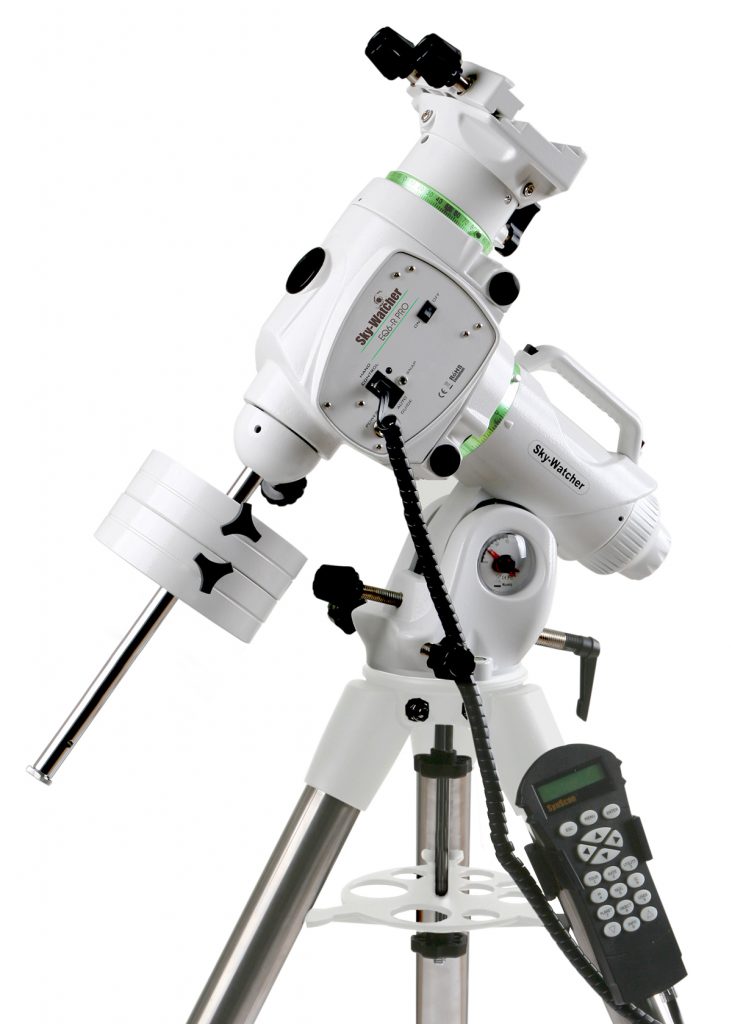
SkyWatcher EQ6R-Pro Equatorial mount
I’ve owned the SkyWatcher EQ6R-Pro mount for over a year and I’ve engaged in 30+ astrophotography sessions. This is my main telescope mount. There are many things to like about the SkyWatcher EQ6R-Pro. The maximum payload capacity of 20kg (44lbs) allows you to use heavier telescopes, tracking gear, cameras, and other astrophotography gear without any issues. The mount is reliable, it accurately slews to and tracks deep-sky targets for astrophotography purposes. Moreover, the USB 2.0 connection on the mount allows you to remote control the EQ6R-Pro from your laptop or computer without having to use a hand controller. Also, the belt drives are very quiet when slewing to your target of preference. Across most nights, I’m getting sub-arcsecond tracking accuracy when using this mount in combination with my guide scope and camera using PHD2 (see below). All this being said, there is one serious design flaw which is the altitude adjustment lever on the back of the EQ6R-Pro to polar align this mount. I’ve since replaced that lever with a knob. Here’s a video where I review this wonderful mount.
The SkyWatcher EQ6R-Pro mount is available at Agena Astro (USA/WW), High Point Scientific (USA/WW), ASTROSHOP (EU/WW), and AMAZON (USA/WW).
ZWO AM5 Harmonic Drive Mount

ZWO kindly invited me to review the ZWO AM5 mount. I was so impressed with it that I decided to buy it after a couple of clear nights. The ZWO AM5 is my first harmonic drive mount. It is one of the more affordable harmonic drive mounts available today in 2023 as you can see in this overview table. The combination of a lightweight mount, the lack of having to use a counterweight for payloads up to 13kg, and the numerous connection options (WiFi.APP, USB/ASCOM, optional ASIAIR) convinced me to make this (serious) financial investment. You can read my full review here. As I secretly hoped, guiding with this mount is below one arcsecond, about 0.8 to 0.5 arcseconds in RA/DEC, depending on the position of the object in the sky – with one-second multi-star auto guiding on in PHD2. As harmonic drive mounts are still pretty new, we’ll have to wait and see about the longevity of these mounts. But I can tell you that this is now my standard “goto” mount, I didn’t build up my much heavier EQ6R-Pro mount since I got this one…
The ZWO AM5 Mount is available at Agena Astro (USA/WW), High Point Scientific (USA/WW), and Astroshop (EU, WW).
SkyWatcher Star Adventurer 2i Pro
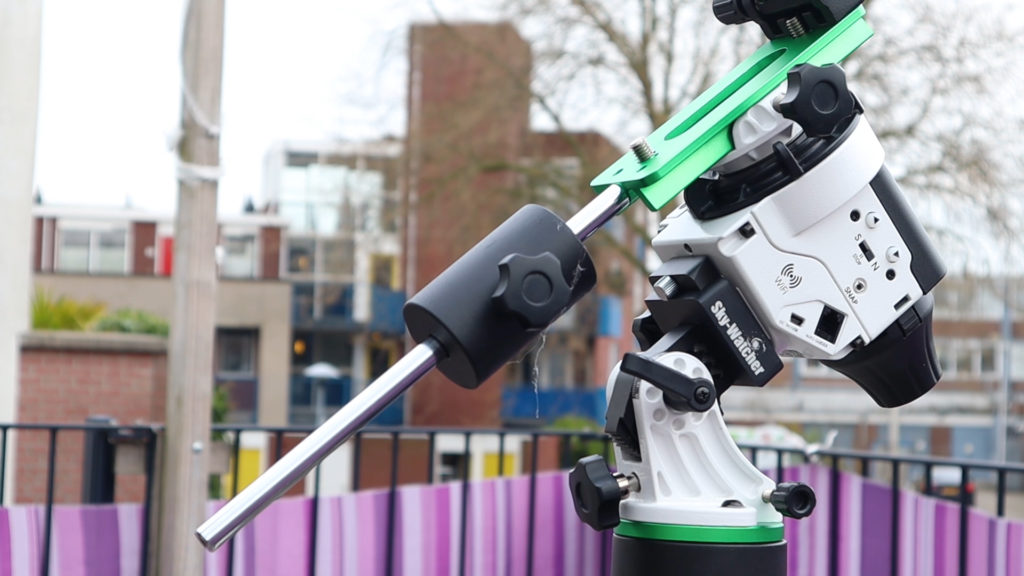
If I go on a holiday with my wife and two daughters, it is always challenging to find extra space to put my astrogear in the trunk. So last year, I decided to get a startracker from SkyWatcher. SkyWatcher released two awesome startrackers to take with you to your favorite dark sky location: The Star Adventurer 2i Pro and the GTI. I decided to buy the 2i PRo as it is about 120 dollars cheaper, it is about 1 kilogram (2 pounds) lighter, it includes a manual dial to start tracking without any hassle, and the 2i Pro can be controlled over WiFi. The Star Adventurer GTI tracks the sky along two axes (RA & DEC) which enables full-fledged auto-guiding, it supports USB/WiFi and hand controller options to control your GTI, and it includes GoTo and an illuminated polar scope to accurately polar align the GTI and find objects in the night sky. Check this v/blog for a full comparison. As for me, with the mounts above in my possession, I was looking for a simple lightweight solution to track the stars and do some casual deep-sky astrophotography with a DSLR camera, like taking Mooon, star trail, and Milkyway pictures. The 2i Pro is a perfect companion for that in my opinion.
The Star Adventurer 2i Pro is available at Agena Astro (USA/WW), High Point Scientific (USA/WW), and Astroshop (EU, WW).
My Astrophotography Cameras
My Canon DSLR Cameras (M50 and 1200D)
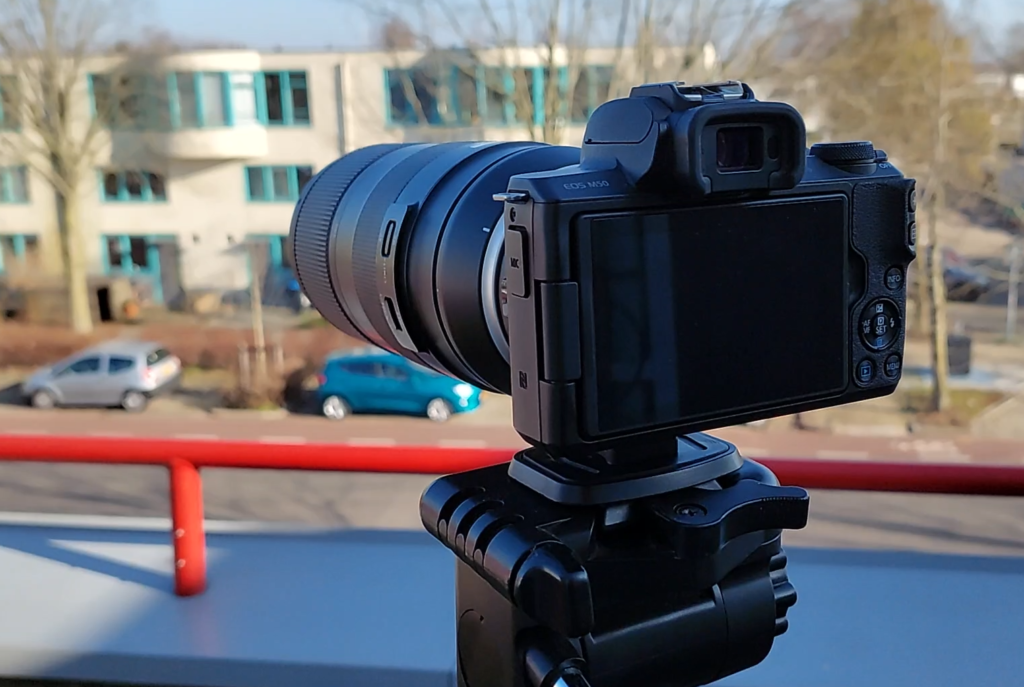
Before diving into my dedicated, cooled astrophotography cameras, I explicitly want to mention that I started my Astrophotography journey with an old, modified Canon 1200D (Rebel T5) – not available anymore as it is replaced by the Canon 2000D (Rebel T7) and newer. Read this v/blog if you want to find out the pros and cons of using a DSLR camera versus a dedicated planetary or deep-sky astrophotography camera. You can see my Canon M50 which I use to record most of my youtube videos. When on a holiday without room for my heavier and bulky equipment, I always take my SkyWatcher Star Adventurer 2i Pro, and my Canon M50 with me so I can do some nice star tracking and Milkyway imaging. Sometimes, I use my Tamron 100-400mm zoom lens to capture the moon too, as shown in this v/blog!
The Canon M50 is available at Amazon (USA, WW), and my Tamron 100-400mm lens is available at Amazon (USA, WW).
ZWO ASI 1600MM pro

This ZWO ASI 1600MM Pro camera was the first monochrome deep-sky CMOS camera I’ve bought back in 2020. I’m still quite impressed with the quality of the images produced by this camera. This camera produces very little noise or amp glow. Moreover, the larger sensor on the ZWO ASI 1600MM Pro is very welcome as it enabled me to capture large deep sky objects with an incredible amount of detail. Mono cameras need astrophotography filters to produce a color image, and I’ll mention some of the filters and filter wheels I’ve used with this camera below. Using a mono camera requires patience. As you need to capture your colors (RGB) separately, the time required to capture deep-sky objects will inevitably be higher (about 3x) as compared to using a color camera. That extra time is more than worth it in my opinion, as it enabled me to produce high-quality pictures. I even won an APOD (astronomical picture of the day) – featured on the NASA website with this camera! Please check out my full review of the ZWO ASI 1600MM pro here.
The ZWO ASI 1600MM Pro camera is available at Agena Astro (USA/WW), and ASTROSHOP (EU/WW).
ZWO ASI 2600MM Pro
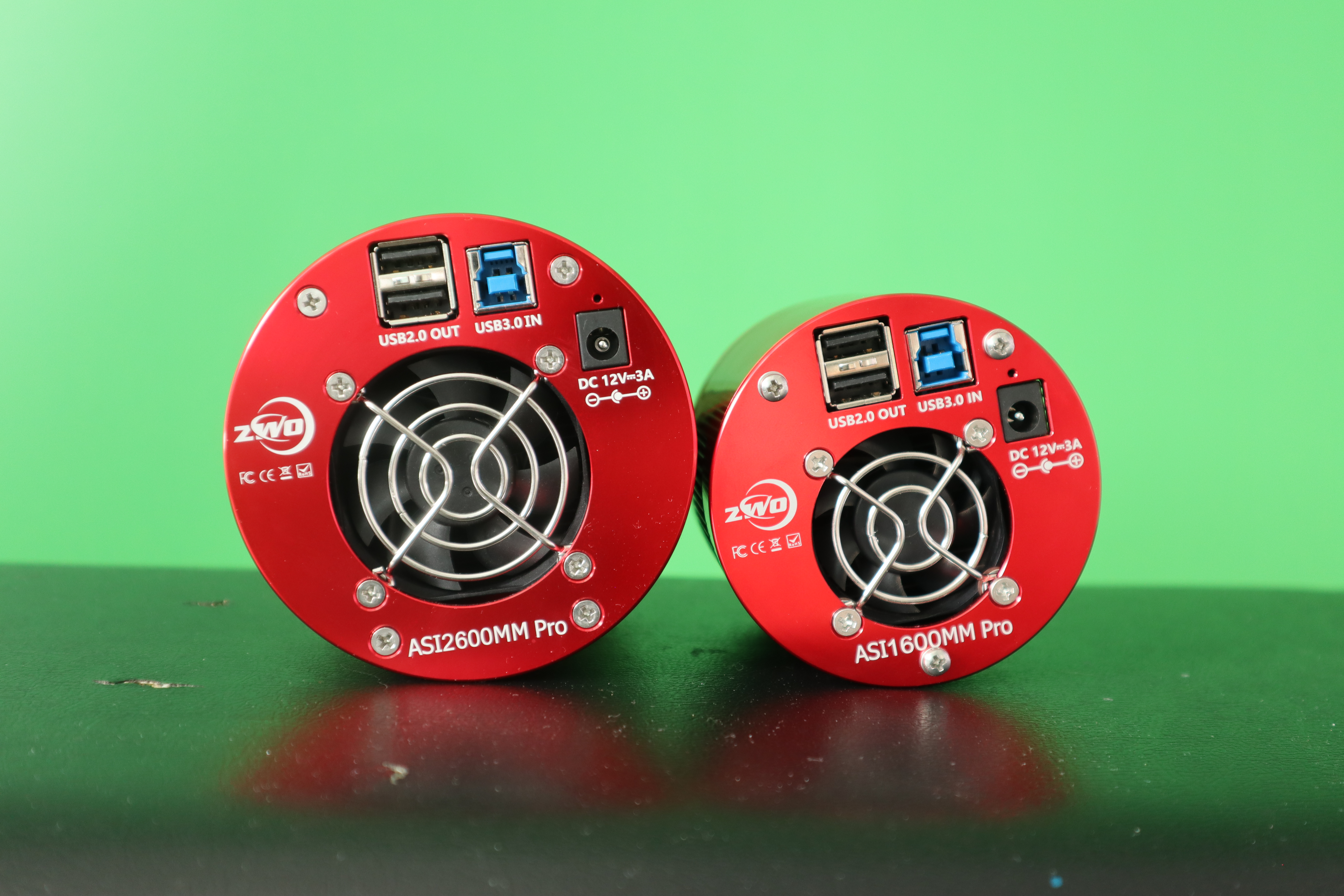
After having used the ZWO ASI as my main goto camera for deep-sky imaging for two years, ZWO introduces the successor of the ASI1600MM Pro, the ASI2600MM Pro. This camera is an evolution compared to the ASI1600MM Pro. The new ZWO ASI2600MM Pro offers a large field of view with a 26-megapixel APS-C format sensor, a Full-Well depth of 50Ke, a 91% QE peak, and other extras like a dew heater and a back-illuminated camera that eliminates any kind of amp-glow we were used to seeing on a CMOS sensor. For a full overview of the differences between the ASI1600MM Pro and the ASI2400MM pro, check this v/blog. I haven’t got a chance to use it often, due to a terrible winter and spring in my country, but my first results are very promising. The California nebula featured on the “my photos” page is captured with my new ASI2600MM Pro.
The ASI2600MM Pro is available at Agena Astro (USA/WW), High Point Scientific (USA/WW), and Astroshop (EU/WW).
My Planetary Cameras
ZWO ASI678MC
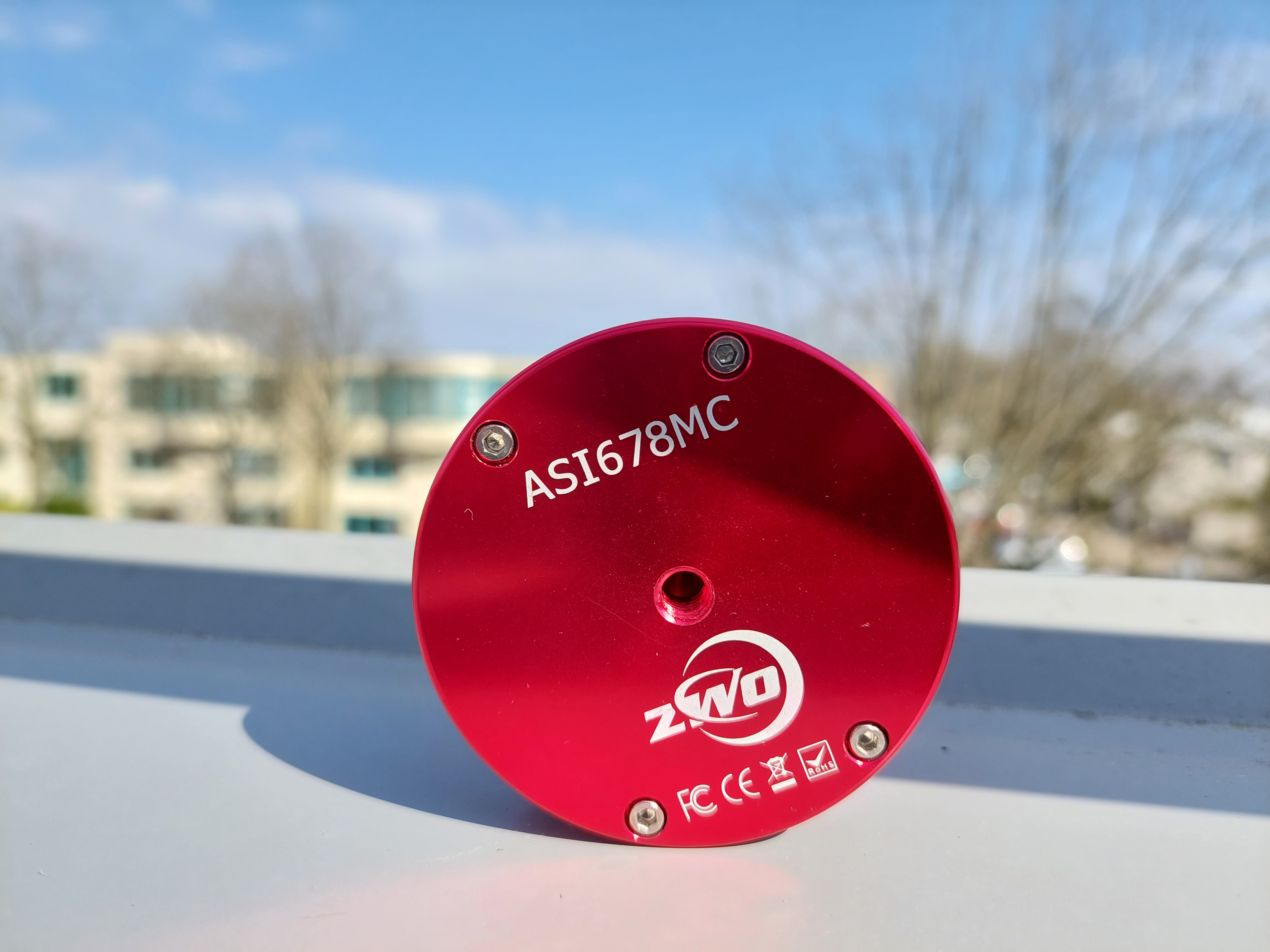
WO kindly sent me their ZWO ASI678MC planetary camera to test out, and my first impressions are pretty positive – so I decided to buy it. The ZWO ASI678MC is one of the cheapest cameras in the new ZWO range that incorporates the latest generation Sony sensor. The ASI678MC has little to no amp glow, it didn’t show much noise in the pictures, and with a Quantum efficiency of 83% and a full-well capacity of 11270 electrons, it offers quite a bit of dynamic range for its price. It isn’t the fastest camera at 47.5 frames per second at its maximum resolution but you can turn the region of Interest down to increase the FPS. At the time of writing it was on sale for just under $300. I primarily use this camera for casual Moon, Planetary and solar imaging. To get an impression, I recommend you read or watch this v/blog.
The ZWO ASI678MC is available at Agena Astro (USA/WW), High Point Scientific (USA/WW), and Astroshop (EU, WW).
For the absolute best planetary camera you may want to go for a mono camera and invest in some good-quality filters. But if you are okay with the pictures I demonstrate in this blog then the ZWO ASI678MC may be a good option for you.
ZWO ASI 178MC-Cool
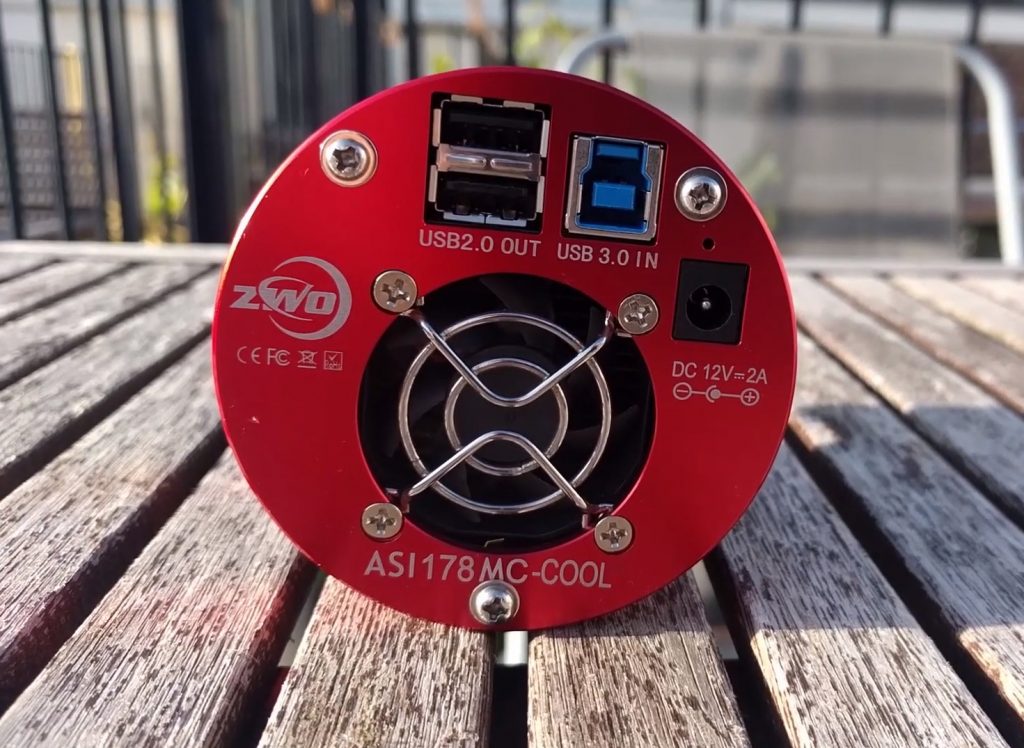
This is my very first color camera for planetary and astrophotography I’ve bought. It was one of the first ZWO color cameras with a Peltier cooler on the market and as a consequence, it has its pros and cons. Note that this camera is also available without the cooler which makes it an excellent planetary imaging camera. The main advantage is that this camera has a very small sensor size, which enables you to really “zoom in” on astronomical targets – even with a relatively widefield telescope such as an 80mm-100mm (3″ to 4″) refractor. This makes the camera perfect for planetary photography and small, bright objects in the night sky. For example, some planetary nebula such as the Dumbbell (M27), and awesome globular clusters like the Great Hercules Cluster (M13) are perfect targets for the ZWO ASI 178MC. However, due to amp glow issues, you are limited to about 1-minute exposures after which the amp glow becomes too much of an issue to deal with in post-processing. Due to these amp glow issues, I would not recommend the 178MC for deep-sky astrophotography of faint(er) objects. Below, I’ll share the details of this camera, my amp glow tests, and some of the pictures I took with this camera. Read my full review of the ZWO178MC-Cool here. Note that the ZWO 178MC is still available using the links below, the “cooled” version has been replaced by newer ZWO cameras.
The “uncooled” version of the ZWO178MC is available at Agena Astro (USA/WW), High Point Scientific (USA/WW), Astroshop (EU, WW), and Amazon (WW).
ZWO ASI 120MC planetary/guide camera
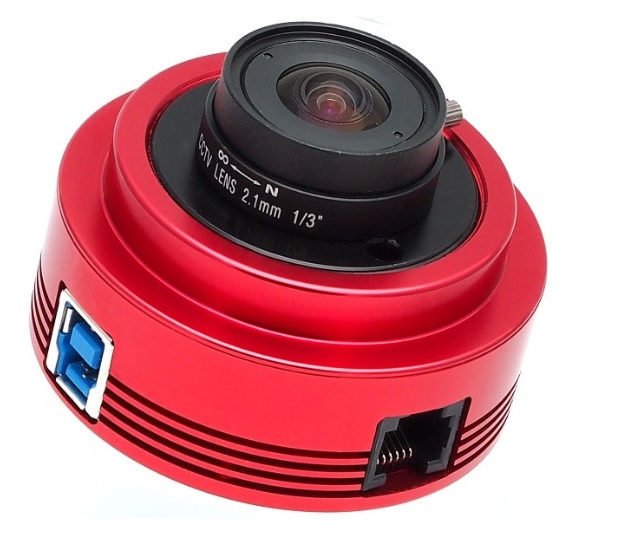
The ASI120MC shows that it doesn’t take an expensive camera to guide well. This is one of the most affordable color cameras. In over 7 years, it never failed me. It always connected and it always found a star to guide my mount and telescope. It also comes with a fish-eye lens which is fun to create night sky time-lapse videos and you can also use this camera as a cheap way to get into Moon and Planetary imaging. You may want to go for the ASI120 mono mini version if you’re exclusively going to use it for guiding.
The ZWO ASI 120MC camera is available at Agena Astro (USA/WW), High Point Scientific (USA/WW), Astroshop (EU, WW), and Amazon (WW).
Orion 50MM guide scope
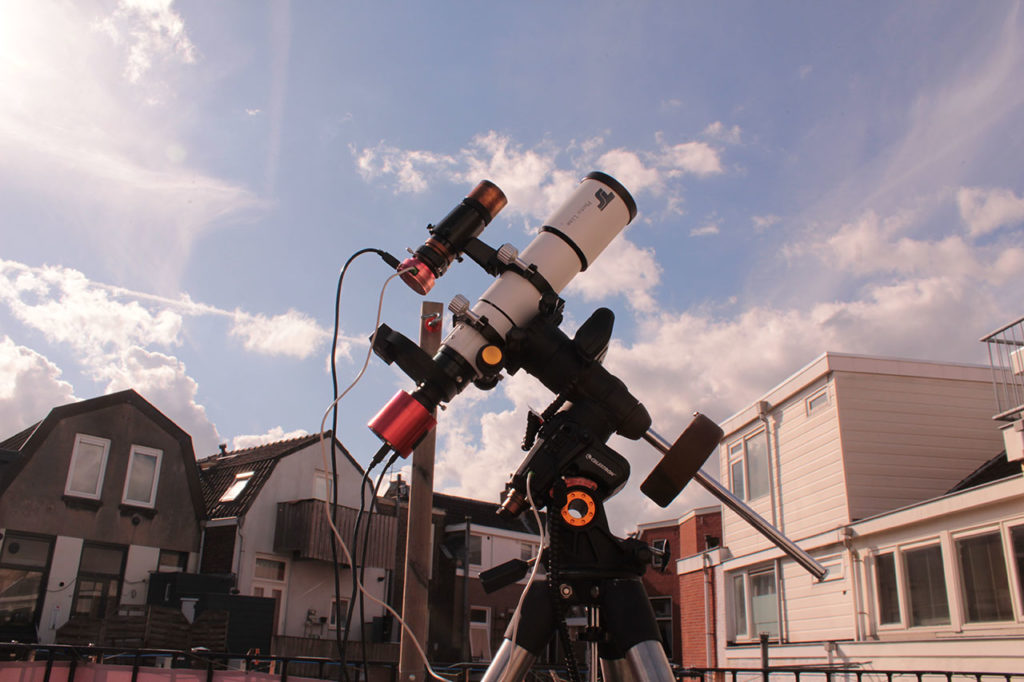
The guide scope is featured on top of my telescope in this picture. This older guide scope is not available anymore, but I’ll feature it anyway because I’m amazed by what this little guide scope has done for me. Quite often, people suggest that these small 50 to 60-mm guide scopes are only good enough for guiding telescopes with a focal length of up to 500mm. I fundamentally disagree with that, based on personal experience. The combination of a small pixel size guide camera like the asi120 and this guide scope with a 50mm aperture, and a 162mm focal length is good enough to guide telescopes with a focal length up to 1500mm. In my opinion, this is a perfect, lightweight solution to get into guiding. I’ve used this little guide scope and a ZWO ASI 120MC camera with my TS 80/480mm APO refractor telescope and my long focal length (2000mm) Edge HD 8″ telescope, and it never failed me. Using PHD2 guiding software and my SkyWatcher EQ6R Pro mount, I’m getting sub-arc second guiding and – most importantly – my stars are round across many astrophotography nights. The orion 50mm telescope is not available anymore, but you can read this v/blog for good alternatives.
Filters and Filterwheel
ZWO 8 position Electronic filter wheel
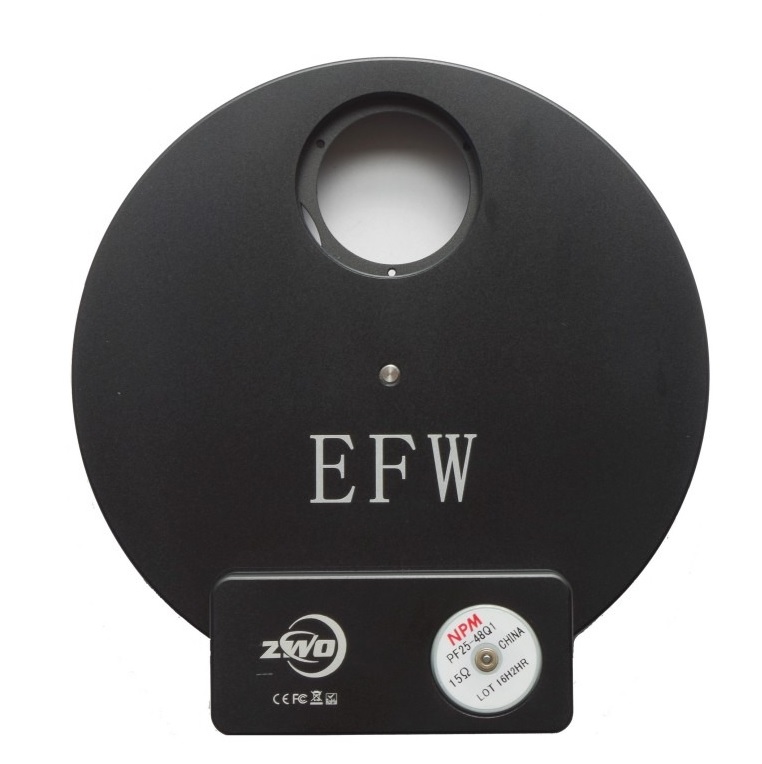
I’ve bought this ZWO 8-position electronic USB filter wheel in combination with my ZWO 1600MM Pro Camera. The filters I’ve mounted are 1.25″ ZWO LRGB and Ha, Sii, and Oiii filters. The filter wheel is very easy to set up via a direct USB connection. In combination with a ZWO camera, you can run a USB cable from the filter wheel to the camera to power the filter wheel. You can use this filter wheel in combination with all the popular software programs, like Sharpcap, APT, NINA, Sequence Generator Pro, or any other software that supports ASCOM. Note that there are also similar, 5×2″ filter wheel solutions available which I use in combination with my ZWO ASI2400MM Pro.
The ZWO 8 position filterwheel is available at Agena Astro (USA/WW), High Point Scientific (USA/WW), and Astroshop (EU, wordwide).
The ZWO 7nm Narrowband filters (Ha, Sii, Oiii) are available at Agena Astro (USA/WW), High Point Scientific (USA, WW), and Astroshop (EU, wordwide).
Daystar Quark Chromosphere

I’ve had lots of fun with the Daystar Quark Chromosphere. Observing and imaging the Sun gives me an extra opportunity to explore the daytime sky. Of course, solar imaging is a hobby in itself, and there are lots of solar scopes and filters available. The reason why I choose to buy the daystar quark is that I can use it in combination with different refractor telescopes, and you don’t need any extra filter in front of the telescope with my 80mm refractor. I’m enjoying the views of the chromosphere layer of the Sun, with the many solar flares, and sunspots that are visible on a daily basis. The chromosphere layer of the Sun is always changing which makes it fun and exciting to see what each new solar session will reveal. We are moving towards a solar maximum in July 2025, so all the more reason to explore the Sun! FYI: Never look directly at the sun! Short-term damage can include sunburn of the cornea—known as solar keratitis. This results in light sensitivity and pain, with symptoms generally showing up within 24 hours of exposure. More serious damage is known as solar retinopathy. This occurs when UV light literally burns a hole in the retinal tissues. It destroys the rods and cones of the retina and can create a small blind spot in the central vision, known as a scotoma. So let’s avoid that and always use special solar glasses and solar filters!